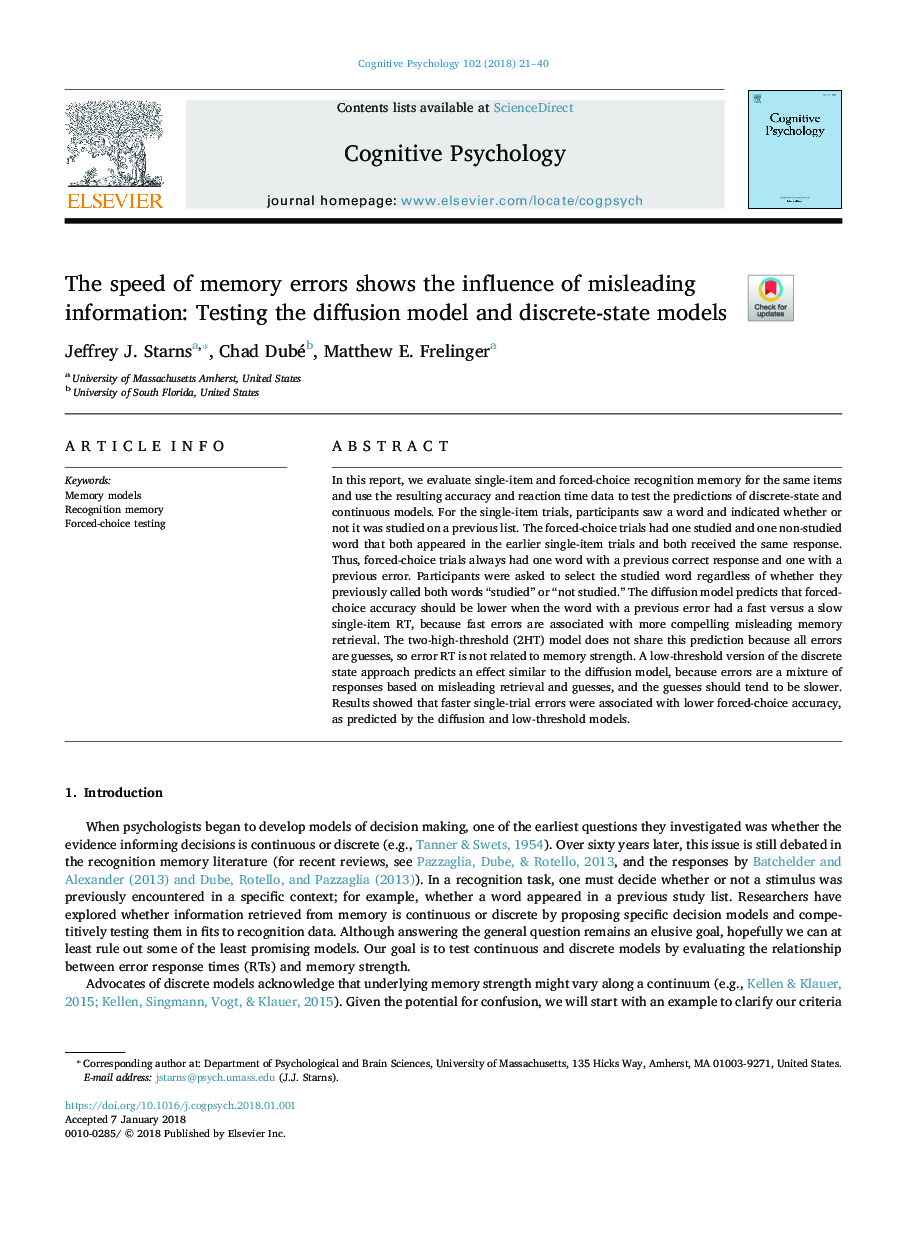| Article ID | Journal | Published Year | Pages | File Type |
|---|---|---|---|---|
| 7272632 | Cognitive Psychology | 2018 | 20 Pages |
Abstract
In this report, we evaluate single-item and forced-choice recognition memory for the same items and use the resulting accuracy and reaction time data to test the predictions of discrete-state and continuous models. For the single-item trials, participants saw a word and indicated whether or not it was studied on a previous list. The forced-choice trials had one studied and one non-studied word that both appeared in the earlier single-item trials and both received the same response. Thus, forced-choice trials always had one word with a previous correct response and one with a previous error. Participants were asked to select the studied word regardless of whether they previously called both words “studied” or “not studied.” The diffusion model predicts that forced-choice accuracy should be lower when the word with a previous error had a fast versus a slow single-item RT, because fast errors are associated with more compelling misleading memory retrieval. The two-high-threshold (2HT) model does not share this prediction because all errors are guesses, so error RT is not related to memory strength. A low-threshold version of the discrete state approach predicts an effect similar to the diffusion model, because errors are a mixture of responses based on misleading retrieval and guesses, and the guesses should tend to be slower. Results showed that faster single-trial errors were associated with lower forced-choice accuracy, as predicted by the diffusion and low-threshold models.
Keywords
Related Topics
Life Sciences
Neuroscience
Cognitive Neuroscience
Authors
Jeffrey J. Starns, Chad Dubé, Matthew E. Frelinger,
